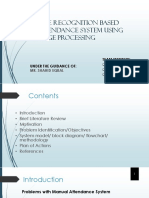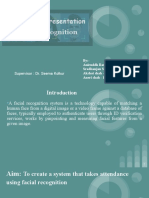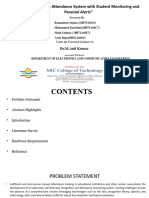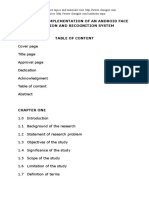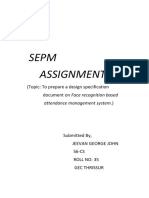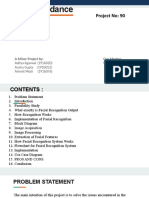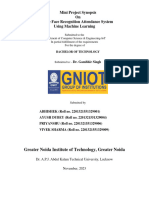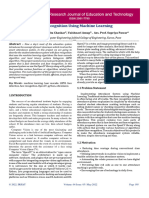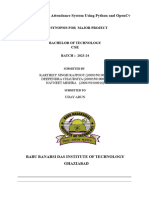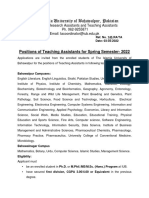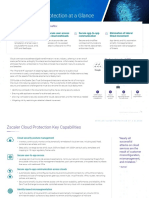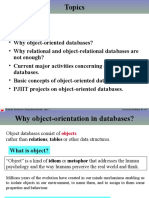0% found this document useful (0 votes)
23 views7 pagesSDD Report
This document outlines the design and implementation of a face detection and recognition system aimed at automating attendance tracking in a university setting. It details the technologies used, system architecture, and user interface design, highlighting the advantages of using facial recognition over other biometric methods. The project utilizes Python and OpenCV for development, with a focus on creating a reliable and efficient attendance system.
Uploaded by
Mubashir HussainCopyright
© © All Rights Reserved
We take content rights seriously. If you suspect this is your content, claim it here.
Available Formats
Download as DOCX, PDF, TXT or read online on Scribd
0% found this document useful (0 votes)
23 views7 pagesSDD Report
This document outlines the design and implementation of a face detection and recognition system aimed at automating attendance tracking in a university setting. It details the technologies used, system architecture, and user interface design, highlighting the advantages of using facial recognition over other biometric methods. The project utilizes Python and OpenCV for development, with a focus on creating a reliable and efficient attendance system.
Uploaded by
Mubashir HussainCopyright
© © All Rights Reserved
We take content rights seriously. If you suspect this is your content, claim it here.
Available Formats
Download as DOCX, PDF, TXT or read online on Scribd
/ 7

















